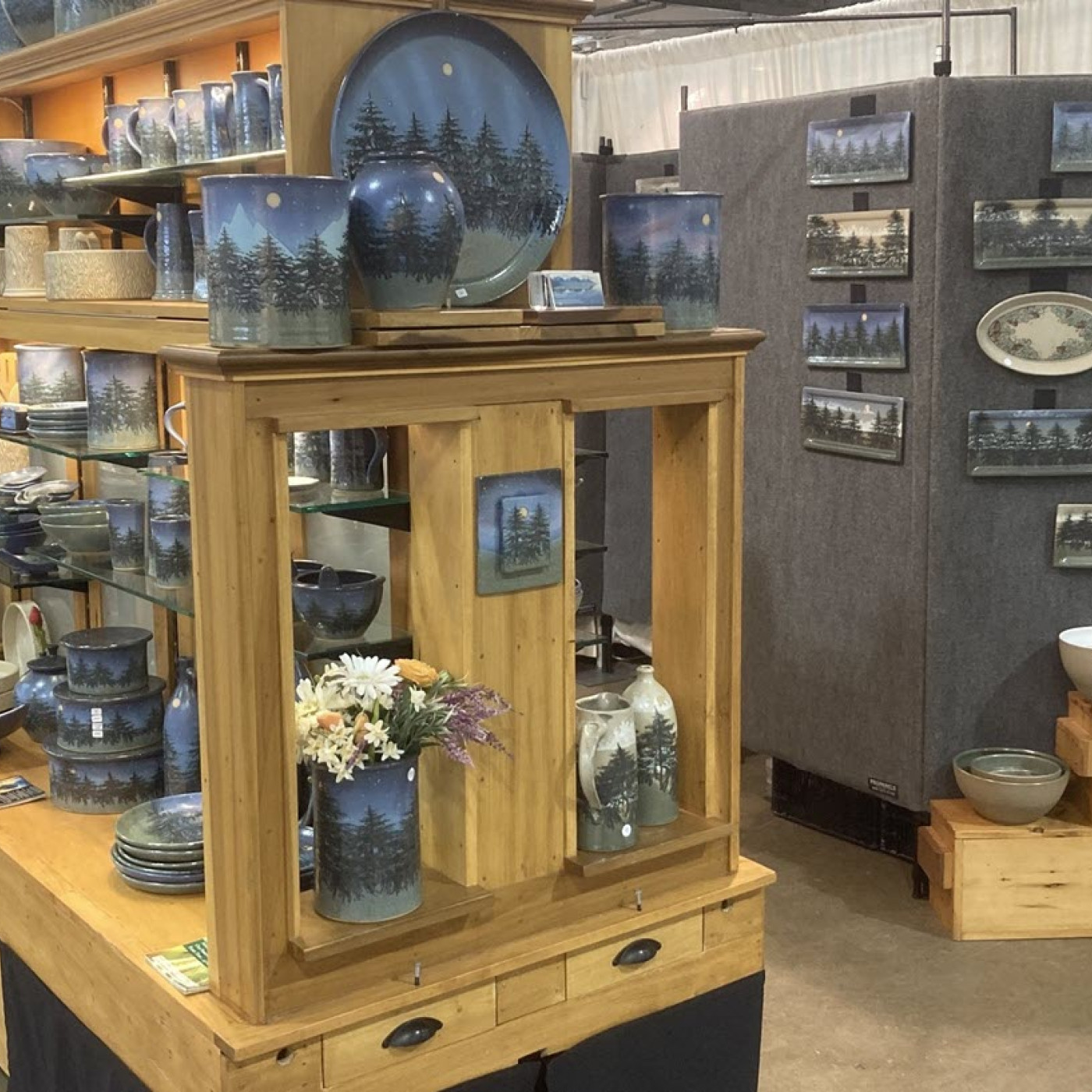Indoor Show Preparation Tips Promoter Shares Her Advice for Planning Your Space

Most indoor shows have set booth sizes from which to choose. Contact the event’s coordinator and ask if canopy frames can be used.
Some allow the canopy frame but not the top and awning. Always bring canopy side walls in case separation is needed from the booth directly next door. It is important to have a canopy frame since it is used for hanging lights and signage.
Purchase a corner booth if you can afford one. It allows attendees to enter from the front or side of the booth freely and step out of the way of other interested customers.
A booth with walls on either side creates a cave-like effect where only a few people can stand inside at once. Other attendees see the booth is crowded and move on rather than look at the work. Indoor shows have a limited amount of space to work with and tend to be less flexible.
Use the Space
Make the most of floor space by working vertically. A tall shelving unit for holding pottery can display large pieces at the top and medium/smaller pieces at eye level.
If customers stoop to look at art, it is a sign to change the display. A tip for 2D artists is to hang work at the same level, measuring down from the top bar of the canopy. This creates a horizon line, giving the eye a chance to move smoothly across the booth.
Keep art as close to eye level as possible. Do not place it low or on the floor. Attendees will not bend, stoop, or squat to see work on lower shelves. Art on the floor is a tripping hazard and might get broken.
Do not use peg board, folding tables, cheap folding chairs, bed sheets as table covers, plastic tubs for browse bins, worn shelving, signage with any obscenities, inexpensive clip-on lamps, and cheap plastic flowers and plants in booth shots and booths.
How To Stand Out
A booth is an extension of the artwork. A jeweler may want wooden custom display cases with glass. A potter may invest in a sturdy shelving unit with an interesting shape.
A sculptor may invest in custom-made pedestals that enhance the work. A custom display piece, professionally made for an artist’s needs, always gets attention.
Signage is the next step. There are businesses that help design vinyl signs and banners. Make sure your business name and your full name are on it.
A banner should reflect the type of work and look professional. It should be visible from several yards away, but not so large that it is the first thing noticed. It should integrate with and support the art, not visually overwhelm it.
Lighting Matters
Lighting is crucial at an indoor show. Artists can show the most amazing work. But if they do not light it properly, people walk by because they cannot see any detail — especially with small items.
When a booth is dark, it looks uninviting. I recommend LED lighting. It is cooler than incandescent lights, reducing the risk of combustion or burning your fingers. LED lights are also more resistant to breakage, which is good when rushed to pack at the end of a show.
Look for LED black plug-in string work lights. These lights feature a small box of lights with a section of extension cord between each box. Multiple strings can be joined together and zip-tied inconspicuously to the top of the tent frame for all-around lighting.
Traffic Flow
Find a small place in one of the booth’s back corners to position the checkout area and chair. Make this area as small as possible to avoid blocking work or the flow of foot traffic.
Most indoor shows have limited space and do not want the artist sitting on a chair in the aisle, because it can block traffic. Always view the booth through the eyes of the customer. Does this setup look inviting? Are there tripping hazards like tubs on the floor, or shelving that a purse or backpack can snag on?
Using carpet may look nice but will people trip on it? Can your booth accommodate wheelchairs and walkers? Again, if a corner booth was purchased, situate the chair in the far corner from the open side in the back.
Remember Acoustics
Be at the same level as the display and customers. Use a director’s chair to boost yourself up. When anyone engages you in conversation regarding your art, immediately stand up.
This not only makes your voice project — it also makes customers feel like you are attentive, and they matter to you. Look them directly in the eyes, speak clearly, and smile. This makes you more approachable.
At an indoor show, there are often many audio speakers throughout the building, set at different sound levels. Ask the promoter to lower the sound level of a speaker if it is difficult to hear customers.
Those who speak quietly should ask to be placed away from entertainment. Do so immediately after being accepted into a show — before the floorplan is set.
